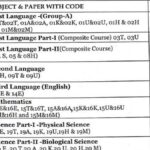
People celebrating Deepavali with crackers in New Delhi on October 20, 2025.
| Photo Credit: Shashi Shekhar Kashyap
After people burst firecrackers across Delhi on Deepavali night, openly flouting an existing ban allowing only green firecrackers from 8 p.m. to 10 p.m., overall air pollution in Delhi on Tuesday (October 21, 2025) morning was about 15 times the limit prescribed by the World Health Organisation (WHO), according to official data.
People burst firecrackers on Monday (October 20, 2025) night before and after the 8p.m. to 10 p.m. window across the city and firecrackers other than green firecrackers were available in the city before Deepavali.
Also Read | India revels in festival of lights; Delhi’s air quality deteriorates on Deepavali
The overall level of PM2.5 (a chief pollutant) in Delhi was 228 micrograms per cubic meter at 6 a.m. on Tuesday (October 21, 2025), as per Central Pollution Control Board (CPCB) data, which is 15.1 times the WHO’s permissible limit of 15 micrograms per cubic meter for a 24-hour period.
Delhi was the “most polluted” major city in the world on Tuesday (October 21, 2025) morning, according to IQAir’s (a Swiss air quality technology company) live data for over 120 cities. Delhi’s AQI of 429 was the worst in the list, followed by Lahore (260) and Karachi (182).
Also Read | Delhi CM Rekha Gupta appeals for green crackers as AQI crosses 300
The overall air quality of Delhi was in the “very poor” category on Tuesday (October 21, 2025) morning with four of the 36 monitoring stations recording “severe” air pollution.
Severe level air pollution “affects healthy people” and “seriously impacts” those with existing diseases, according to CPCB.
EDITORIAL | Fire in the sky: on Deepavali and the battle for clean air
Delhi’s 24-hour average air quality index (AQI) was 356 at 9 a.m. on Tuesday (October 21, 2025), as per the Central Pollution Control Board’s (CPCB) data. Bawan, Burari, Jahangirpuri, and Wazirpur reeled under “severe” air pollution.
An AQI between 51 and 100 is “satisfactory”, 101 and 200 is termed as “moderate”, 201 and 300 “poor”, 301 and 400 “very poor”, and 401 and 500 “severe”, as per the CPCB.
Also Read | GRAP Stage 2 curbs kick in as Delhi’s air turns ‘very poor’
Several other towns and cities in north India also witnessed “very poor” air quality, as per CPCB’s data.
Every winter, air pollution spikes in Delhi-NCR and most parts of the larger Indo-Gangetic plains (IGP) mainly due to meteorological factors such lower wind speed and drop in temperature, and pollution from stubble burning during October-November and bursting of firecrackers worsens it.
Published – October 21, 2025 10:13 am IST






















